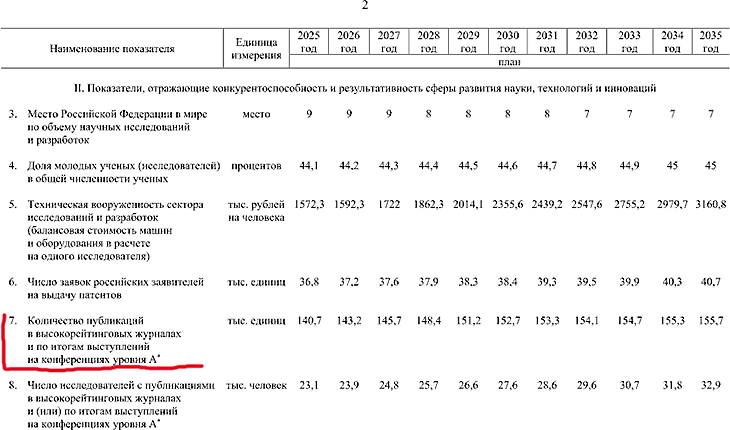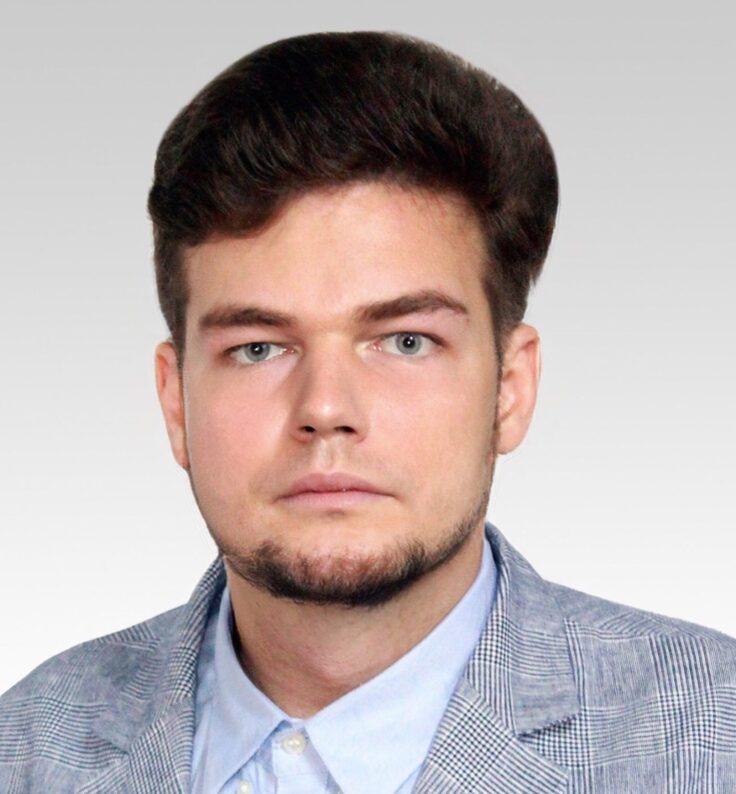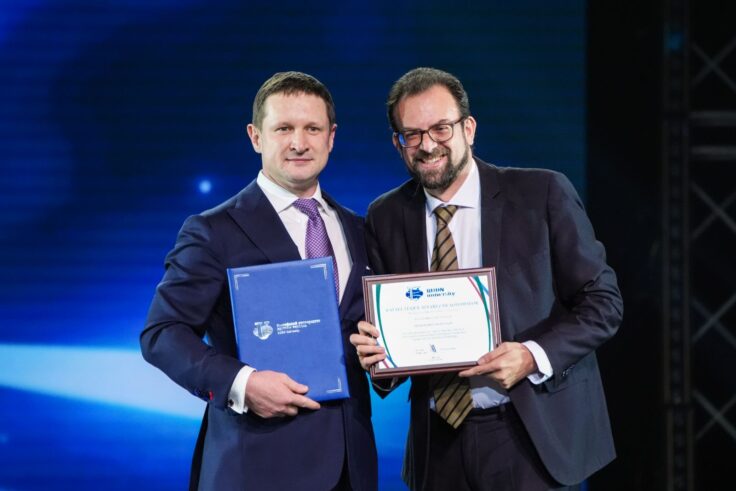
T-invariant, co-founder of Dissernet Andrey Rostovtsev and community project coordinator Larisa Melikhova continue their “Plagiarism Navigator”. Through individual cases of international academic plagiarism, we examine the global-scale imitation of scholarly activity. To tackle this issue, specially trained NLP language models—developed in collaboration with linguists from the universities of Helsinki and Oslo—are employed. In the fourth installment—an investigation centered on an unassuming lecturer from Sechenov University who infiltrated an Iran-Iraq publication scheme in top-tier European and American academic journals, establishing a seamless enterprise trading publications under the guise of his university’s reputation.
Previously in Plagiarism Navigator
- Episode 1: China-Ukraine-Poland – The story of a Chinese scholar who defended a dissertation in Kharkiv, cobbled together from Russian-language works translated into Ukrainian.
- Episode 2: Russia-Tajikistan-Iran – The case of Iranian scholars obtained degrees in Tajikistan (2011–2013) under Russia’s VAK system.
- Episode 3: Russia-Serbia-Turkey-Switzerland-Lithuania – The tale of a Serbian academic who resorted to buying co-authorships and outright plagiarism.
Recently, the Russian government approved a set of performance indicators for state policy in scientific and technological development, including targets for publications in high-impact journals and presentations at top-tier conferences. The protagonist of today’s Plagiarism Navigator episode was ahead of the curve—operating in this sphere long before official directives.

From Sechenov University to Europe
This entire affair began for us with a publication dedicated to visualizing learning and memorization processes using mobile devices. In 2020, the paper was purchased through the ”International Publisher” (IP)—a Moscow-based “marketplace” for co-authorship (we covered its workings in detail in a previous issue of Plagiarism Navigator as well as in a separate investigation).
The co-authors of this paper, published in an Austrian academic journal, were: Lyubov Vorona-Slivinskaya, a professor of construction economics from St. Petersburg, who paid 41,000 rubles (listed as the corresponding author responsible for editorial communication); Dmitry Bokov, an associate professor specializing in pharmaceutical chemistry from Sechenov First Moscow State Medical University, who paid 37,720 rubles; Olga Li, a legal scholar from Perm State University’s Department of Criminalistics and Criminal Procedure, who paid 36,080 rubles.
Sechenov University immediately caught our attention. As noted in our earlier reporting, this institution—for reasons unclear to us—is the undisputed leader among Russian universities in the number of publications purchased through IP.
Vorona-Slivinskaya’s name was already familiar to us. Her candidate dissertation (kandidatskaya) was plagiarized wholesale from a single source: in essence, only the title page of a pre-existing thesis had been replaced. Data from the original work, which analyzed the labor market in the Republic of Bashkortostan, were extrapolated to all of Russia through a simple find-and-replace of “Bashkortostan” with “the Russian Federation.” By the time our investigation began, Vorona-Slivinskaya had already honed her collaboration with the International Publisher. As evidenced on the Dissernet website, she appears as a co-author on five additional papers bought through this “marketplace”—all published in journals from the developed world: the U.S., Germany, Austria, Switzerland, the Netherlands, and Italy.
At a Breakneck Pace
Dmitry Bokov, a young specialist who had recently defended his candidate dissertation, turned out to have three more publications purchased through IP. However, upon checking his profile in the Scientific Electronic Library eLibrary, we noticed a striking distribution of his publications in recent years.

In just five years, this early-career researcher managed to publish 260 papers. In 2022 alone, he produced 100 articles—averaging two papers per week. To put this into perspective, Dariush Mozaffarian, a world-renowned scientist and one of the most prolific authors in medical research, published only 104 papers over three years.
Initially, Bokov’s work appeared almost exclusively in domestic journals. But starting in 2020, Russian-language publications gradually disappeared from his record—an unmistakable alignment with the state’s push to incentivize scholars (and universities) for publishing in international journals.
Until now, we assumed that these incentives were the primary driver of publication inflation. Publishing in a reputable international journal requires significant financial outlays. However, by splitting costs among co-authors—Bokov’s papers typically list seven to ten, sometimes even more—researchers can offset expenses through grants and bonuses.
In our earlier investigation into the International Publisher, we highlighted the case of a lecturer from Tula who paid 77,900 rubles for a publication but later secured a 200,000-ruble grant, effectively turning a profit. Yet Bokov’s situation defies logic. We reached out to colleagues at Sechenov University to clarify whether the institution awards article-related bonuses. Several declined to comment, but one employee confirmed that a 100,000-ruble bonus is granted for a single Q1/Q2 journal publication—once per year, with no guarantee of payment. So why publish a hundred papers a year?

We dubbed this phenomenon the “Bokov Enigma” and continued our investigation.
What struck us wasn’t just the sheer volume of Bokov’s publications. His early papers were clearly tied to his specialization—articles in Russian journals like Pharmacy and Nutrition Issues. But starting in 2020, the range of topics in which he suddenly became an “expert” expanded dramatically: nanoalloys, aluminum tubing, electrocatalysts, and more. By 2022, Bokov—a nutrition specialist—had co-authored a paper on computer simulations of methane combustion published in a Chinese energy journal. His co-authors hailed from India, China, Indonesia, Iran, and Iraq. This is typical for Bokov: he often appears as the sole European researcher in collaborations with scholars from Iran, Iraq, India, Indonesia, Pakistan, Saudi Arabia, and the UAE. But if you assumed these publications were part of some noble effort to “bring Russian science to the Arab world,” think again. The journals publishing his papers with Asian co-authors are almost exclusively based in Europe (UK, Switzerland, Austria, Netherlands) and the Americas.
Investigators at For Better Science have been tracking Bokov’s activities for some time. Colleagues tipped us off about a Latvian “authorship marketplace,” Science Publisher Company, which—much like “International Publisher” (IP)—openly advertises its services online. By comparing their offers with Bokov’s post-offer publications, we identified five more papers with purchased co-authorship (1, 2, 3, 4, 5). One offer explicitly lists Bokov as the third author, having paid $1,050 for his spot.
But that’s not all. Bokov also frequently engaged with an Iran-Iraq-based “paper mill” that posts offers on social media for slots in top-tier journals. Researchers uncovered three Facebook ads later linked to Bokov-co-authored papers (1, 2, 3).
These and other articles reveal that not only Bokov but also his Asian co-authors frequently publish in fields entirely unrelated to their expertise. What’s baffling is that journals under major publishers like Elsevier, Wiley, MDPI, and Springer haven’t raised alarms. The explanation seems simple: peer review absolves them of responsibility. If a reviewer approves a paper, it gets published—even if that reviewer was handpicked by a dishonest editor paid off by the authors. But this scheme requires payments not just for publication (already costly in such journals) but also to intermediaries.
“Good quality Tuberculosis”: When Academic Fraud Reaches Absurdity
Bokov’s academic house of cards began collapsing in 2022 when journals started actively retracting his papers – but the roots of this deception stretch back much further. The earliest retracted publication dates to 2013 in Sechenov University’s own journal, when Bokov was merely a fifth-year medical student.
A particularly telling case involves one of Bokov’s first four papers purchased through IP The retraction came at the request of a co-author – another Sechenov student who demanded removal after Dissernet exposed the paper’s fraudulent origins. This early episode reveals how deeply embedded the corruption was in Bokov’s academic trajectory.
To date, we’ve identified 19 retracted papers bearing Bokov’s name, though this number continues to grow. Journal editors cite three primary reasons: plagiarism, questionable authorship, citation manipulation.
Plagiarism. This is the reason behind the retraction of three papers co-authored by Bokov. At first glance, one might expect the number to be far higher, yet detecting borrowed content in these articles is no simple task.
We analyzed Bokov’s retracted papers—those withdrawn specifically for plagiarism—and found that plagiarism detection software flagged no issues. Only upon a meticulous side-by-side reading does it become clear that the texts discuss the same subject. This is a textbook example of what research integrity experts call “deep rewriting”—a method increasingly favored by academic fraudsters.
In some cases, plagiarism is uncovered solely through duplicated illustrations, copied verbatim from the original source, even when the accompanying text has been entirely rewritten.
One of Bokov’s still-unretracted plagiarized works came to light thanks to sharp-eyed researchers. While reviewing an article on nanomaterial synthesis, they stumbled upon some baffling claims about tuberculosis—including the assertion that “good quality tuberculosis should be prepared in such a way as to remain stable for months without settling.” Their conclusion? The term “tuberculosis” likely appeared due to an automated context replacement, performed by software without human oversight.
Our examination of this article confirmed it was plagiarized. Not only did Bokov lift a substantial portion of text from a 2010 source publication, but he also copied reference numbers 18 through 24 verbatim—only to list completely different works under those numbers in his bibliography. This blatant mismatch exposes yet another layer of deception: the references themselves were fabricated.
Citation Manipulation. Investigators from For Better Science offer an explanation for such citation fraud—and, by extension, the “Bokov enigma.” They describe a system they call the “fake citation economy.” To artificially boost prestige, h-index scores, and other academic metrics, authors of low-quality papers—which would otherwise go unnoticed—pay prolific publishers like Bokov (either directly or through “citation brokers,” a shady niche profession) to include references to their work. Predatory journals and clone publishers also engage in this practice, buying citations to feign legitimacy in the international publishing market. The result? What For Better Science dubs a “clown-car procession of gibberish”—papers crammed with irrelevant citations.
Dubious Co-Authorship. Publication mills, which openly sell co-authorship slots, operate globally (three were named earlier: Moscow’s International Publisher, an Iran-Iraq cartel recruiting via social media, and Riga’s Science Publisher Company, modeled after its Moscow counterpart). While such schemes aren’t always easy to detect, co-authorship fraud can surface in unexpected ways.
For instance, Human Immunology issued an Expression of Concern two years after publishing a Bokov-co-authored paper: “We’ve learned that multiple authors are under investigation for purchasing co-authorship. These individuals appear as co-authors across entirely unrelated topics in various journals, many of which have since been retracted. Additionally, most co-authors were added during peer review without editorial approval, and the lead author was replaced without justification.” Though the article remains unretracted for now, the process is underway.
Publication mills have their star clients. For Better Science crowned Bokov’s frequent co-author Rafael Luque the “King of Paper Mills”—a researcher expelled from Spain’s University of Córdoba for illicit payments from Saudi Arabia and Russia, now based at RUDN University in Moscow. With 700+ publications, Luque sets a high bar (Bokov, ranking third in productivity, still has room to grow). One of their joint papers (with six other co-authors) was retracted not just for irrelevant citations, but also for a blatantly falsified image.
Simultaneously, we witness how the “paper mill kings” masterfully inflate citations of their own work. Take, for example, the aforementioned article with the bizarre “tuberculosis” substitution—a paper outside the usual research scope of some authors, riddled with plagiarism and citation fraud. Despite its glaring flaws, it has been cited over 700 (!) times. Unsurprisingly, Bokov’s h-index stands at 30—on par with most Nobel laureates in physics and far surpassing that of nearly all candidates for the Russian Academy of Sciences in the upcoming 2025 elections. And here’s the most alarming part: This isn’t happening in obscure, low-tier journals. These manipulated papers appear in top-tier Q1 and Q2 publications, handpicked by the world’s most prestigious academic publishers.
These curated collections are distributed via subscription to leading universities and research laboratories worldwide. What makes this case particularly striking is that the author in question holds a Russian affiliation—at a time when, three years into the war with Ukraine, many legitimate Russian scientists face outright rejection from international journals.
The Two Faces of Bokov
The “Bokov Enigma” continued to perplex us: while paid citation schemes explain part of his extraordinary productivity, they don’t tell the whole story. Delving deeper into his extensive publication record, we made a startling discovery: Bokov never actually abandoned his Russian colleagues or his original field of research, as we had initially assumed. He continues to publish within his specialty—including in Russian venues, though often in English. At some point, we realized: there are two distinct, non-overlapping Bokovs.
One Bokov remains a specialist in nutrition and pharmaceutical chemistry, actively publishing papers as the lead author (and corresponding author) in large teams of Russian co-authors. The vast majority of his collaborators are colleagues from Sechenov University and the Center for Nutrition and Biotechnology (Bokov’s secondary affiliation), occasionally researchers from RUDN University, and, more rarely, authors from other Russian cities. Very few foreign co-authors appear—mostly from Serbia or Lithuania.
These publications are churned out in large numbers but are confined to low-tier (Q3–Q4) or outright predatory journals, predominantly based in India. At first glance, one might assume that Sechenov University is a hub of genuine pharmacological research. However, closer inspection reveals the same “science laundering” seen in other paper mills: previously published works are translated into English and republished under new authorship.
A prime example is a joint Sechenov-RUDN publication that follows this pattern. Another favorite outlet of pharmacologist Bokov is the Indian International Journal of Pharmaceutical Research—a journal flagged by Dissernet as predatory back in 2020 and subsequently expelled from Scopus. Bokov has published 10 papers there.
The second Bokov is the one we’ve come to know—a “specialist in everything”, appearing as a secondary or tertiary co-author in papers alongside foreign researchers from Asia and North Africa. These articles are published in top-tier Q1–Q2 journals from Europe and America, indexed in both WoS and Scopus.
However, each journal typically features no more than one or two of his papers—suggesting that by the second or third submission, the journal’s “immune system” kicks in and flags irregularities. It is in these high-profile journals that investigations and retractions of Bokov’s work have begun to surface.
The “Bokov Enigma” ties into another puzzling phenomenon: Why is Sechenov University the undisputed leader in papers purchased from the International Publisher?
Now we have a consistent theory. Inspired by the lucrative success of the “International Publisher”, Bokov realized he could aim higher—he could become such an “academic broker” himself. All the necessary conditions were in place, including tacit approval from Sechenov University’s administration. This new scheme proved far more productive: by embedding himself in the Iran-Iraq publication cartel, Bokov boosted his own academic clout while simultaneously acting as a gatekeeper—securing his university’s access to top-tier international journals. Meanwhile, the “Russian Bokov” monetized his reputation, offering co-authorship slots to colleagues in papers bearing his name—now that of a “world-class scientist.”
Everyone wins: Sechenov University secures state subsidies for its researchers’ publications—including those in top-tier international journals, which officials particularly value (the fact that some of these papers were later retracted escapes their notice). The researchers receive bonuses from the university, and the IP stays in business. Bokov, the universal benefactor, likely collects accolades from all sides.
While closely examining Bokov’s activities, we nearly overlooked his frequent co-author—Rafael Luke. He appears to serve the same role for RUDN University as Bokov does for Sechenovka: a “gateway” into elite global journals. In most RUDN-affiliated papers published in Q1 and Q2 Scopus & WoS journals, Luke is the sole “Russian” author among large groups of co-authors from China, Iran, Pakistan, South Korea, Ecuador, and Spain. Moreover, journals in the same tier have recently begun retracting papers involving Luke, just as they have with Bokov’s publications. Here are several recent examples: 1, 2, 3, 4, 5.
As revealed by For Better Science, the latest retracted paper was purchased through the aforementioned Iran-Iraq publishing cartel via an Iranian Telegram channel.

A recent Kremlin ceremony awarded foreign professors for their “exceptional contributions” to Russian academia. Among the recipients was Rafael Luke—the so-called “king of paper mills.” Now we’re left wondering: will Dmitry Bokov be next in line for a presidential handshake?
A curated list of Bokov’s publications with confirmed data manipulation can be found HERE.
Our investigation also uncovered signs that Bokov isn’t the only “gatekeeper” funneling Sechenov University’s research into European journals via the Iran-Iraq publishing cartel. Plagiarism Navigator will revisit this explosive topic in an upcoming report.
The authors thank Alexander Magazinov for his assistance in preparing this article.